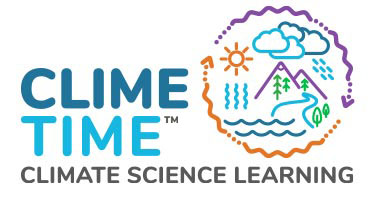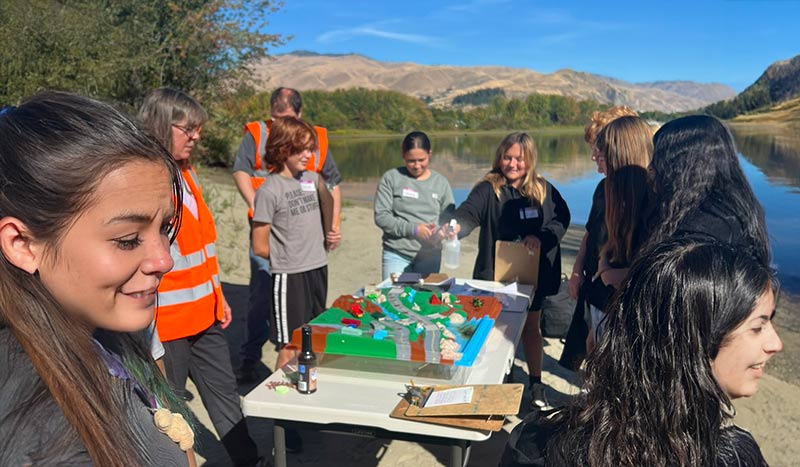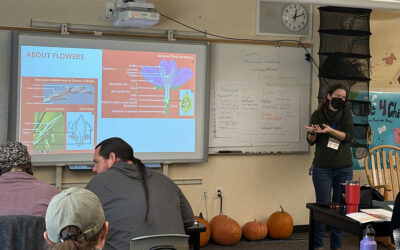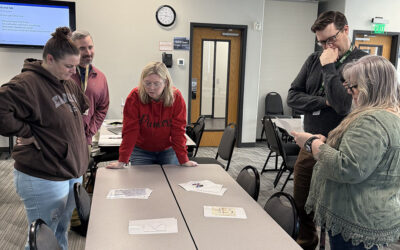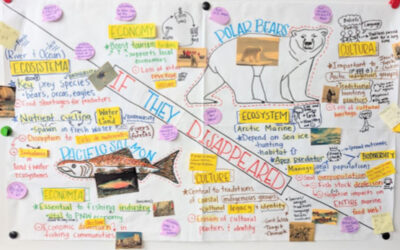Over four action-packed days, 290 seventh graders from Eastmont School District ventured into the Horan Natural Area (part of the Confluence State Park) a wetland landscape just 15 minutes from their school grounds. This place-based, outdoor learning experience, led by the North Central Educational Service District, with funding from ClimeTime Proviso, offered students a chance to explore real-world science and engineering challenges, and connected classroom knowledge with hands-on application.
The driving question guiding their field adventure was: How does the Horan Natural Area support the plants and animals that live there?
Through five immersive stations, students explored ecological and environmental concepts, while also developing key skills in critical thinking, collaboration, and social-emotional learning. The experience was carefully designed to provide access for all learners. Students learned about the importance of local ecosystems, saw how professionals solve real-world problems, and considered how the Horan Natural Area supports both plants and animals through its diverse natural processes.
The Five Learning Stations
Art Station
Students explored connections between the different spheres (atmosphere, hydrosphere, biosphere, and geosphere) through watercolors.
Water Quality Station
Students conducted a stream bank analysis using real scientific tools to measure dissolved oxygen, pH, turbidity, and nitrates. They were able to see firsthand how the health of water impacts the entire ecosystem.
Engineering Station
The highlight of this station was a real-world engineering problem — designing a road on the edge of the natural area with minimal disruption of the ecosystem. Students discussed potential solutions with a professional engineer, and gained insight into how engineering balances development with environmental protection.
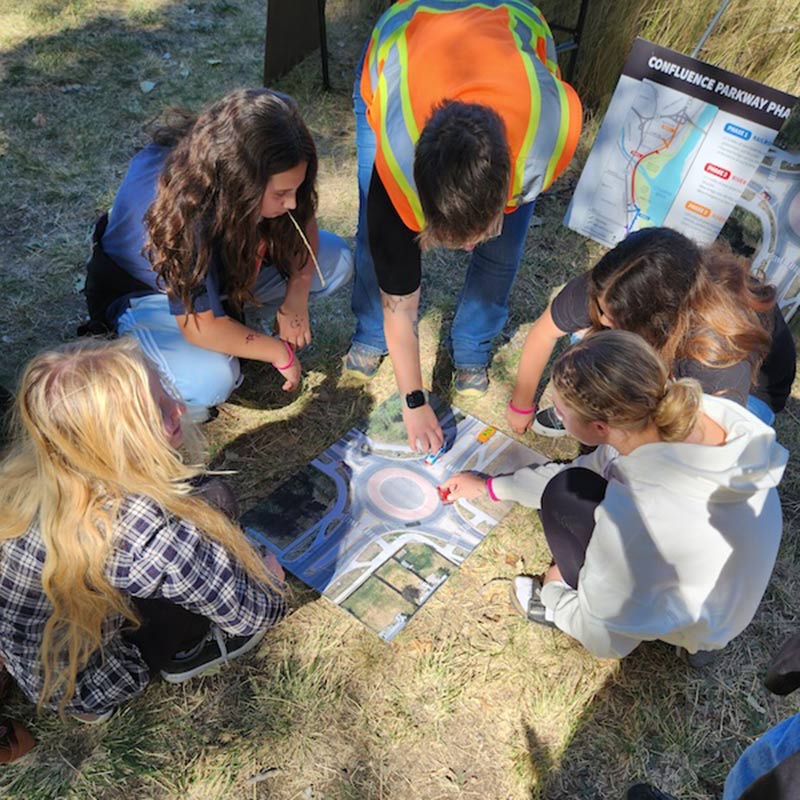
Students work with a local engineer to learn how to properly navigate a traffic roundabout as they learn about the pending construction of a parkway in the Horan Natural Area.
Wildlife Station
This station introduced students to the local wildlife by examining skulls, scat, and pelts. They learned about the different species that live in the Horan Natural Area, how these animals are adapted to the ecosystem, and humans’ role in supporting ecosystems.
Runoff Mitigation Station (Enviroscape Model)
Using a hands-on model, students explored the effects of runoff and strategies for mitigating its impact on local ecosystems. They learned how human activities can harm natural areas and discussed ways to reduce these impacts.
Real-World Connections and Career Exploration
One of the most exciting aspects of the day was the opportunity for students to interact with professionals in a variety of fields. Whether it was an engineer, an artist, or a wildlife biologist, students got a glimpse into different careers. Each station leader shared their experiences, answered questions about their professions.
The authentic context of the field trip — working on real engineering challenges, studying actual ecosystems, and interacting with professionals — provided students with a first-hand connection to the material they had been learning in school and an opportunity to apply their knowledge.
Rigor and Preparation
This field trip wasn’t just a day off from school; it was an extension of the classroom. Prior to the field trip, teachers met with the coordinator and reviewed resources to prepare students for the experience. Additionally, station leads walked the site and talked through lessons with the coordinator.
The stations themselves were grounded in the Science and Engineering Practices from the Next Generation Science Standards (NGSS). Students engaged in activities such as:
- Asking questions
- Obtaining and communicating information
- Supporting claims with evidence
- Planning and carrying out investigations
After the field trip, teachers had the option to continue exploring these themes in the classroom by:
- Developing and using models
- Analyzing and interpreting data
- Engaging in arguments from evidence
- Systems, Cause and Effect, and Matter and Energy were key concepts thread throughout the day.
- This comprehensive approach ensured that students not only enjoyed their day in the field but also deepened their understanding of core ideas, practices and concepts.
A Collaborative Effort
The success of this field trip was due to careful collaboration between teachers, station leaders and partnering agencies, and the organizing staff. Teachers were involved in the planning stages to ensure that the field trip aligned with the students’ curriculum and learning goals. Thank you to the following partners for supporting outdoor learning.
A special thank you to NCESD Migrant Education Team and Confluence State Park Staff! Washington State Parks, Douglas County PUD, Chelan County PUD, City of Wenatchee Public Works Department: Washington state Department of Fish and Wildlife. Cascadia, Foster Creek, and Okanogan Conservation Districts, Julie Nelson, and Douglas County Stormwater Engineer.
